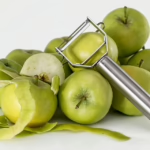Men’s Health: Tackling Common Genitourinary Concerns
Introduction
Men’s health encompasses a wide range of topics, but one area that often gets less public attention than it deserves is genitourinary health. This term refers to the urinary system as well as the reproductive organs. Various conditions, from benign to life-threatening, can affect men’s genitourinary health. This article will explore some of the most common concerns, including urinary tract infections (UTIs), erectile dysfunction (ED), prostate issues, and others, providing an overview of symptoms, causes, preventative measures, and treatment options.
Understanding Genitourinary Health
The genitourinary system includes the kidneys, ureters, bladder, urethra, and male reproductive organs, including the penis, scrotum, and testes. Given the complexity of this system, it is essential for men to be proactive about their health, recognizing signs and symptoms early and seeking appropriate medical care.
1. Urinary Tract Infections (UTIs)
What Are UTIs?
While UTIs are more common in women, men can also suffer from these infections. A UTI is an infection in any part of the urinary system, including the kidneys, ureters, bladder, and urethra.
Symptoms
Men may experience:
- Frequent urination
- Burning sensation during urination
- Cloudy or strong-smelling urine
- Abdominal pain or pelvic discomfort
Causes
Common causes of UTIs in men include:
- Urinary retention
- Prostate enlargement
- Inadequate hydration
- Poor hygiene
Prevention and Treatment
Men can reduce the risk of UTIs by:
- Drinking plenty of fluids
- Practicing good hygiene
- Urinating after sexual intercourse
Treatment typically involves antibiotics, although the specific type will depend on the infection’s severity and the individual’s medical history.
2. Erectile Dysfunction (ED)
Defining ED
Erectile dysfunction is the inability to achieve or maintain an erection sufficient for satisfactory sexual performance. It can occur at any age but is more common in older men.
Symptoms
The primary symptom is difficulty getting or maintaining an erection. Men may also experience decreased libido.
Causes
ED can arise from a variety of factors, including:
- Psychological issues: Anxiety, depression, or stress
- Physical conditions: Diabetes, hypertension, or cardiovascular disease
- Lifestyle choices: Smoking, excessive alcohol consumption, or sedentary behavior
Prevention and Treatment
Men can take several steps to prevent ED, including:
- Maintaining a healthy weight
- Engaging in regular physical activity
- Reducing alcohol intake
- Quitting smoking
Treatment options may include oral medications like PDE5 inhibitors (e.g., Viagra or Cialis), vacuum erection devices, or more invasive procedures like injections or penile implants.
3. Prostate Health
Importance of the Prostate
The prostate is a walnut-sized gland that plays a crucial role in male reproductive health by producing seminal fluid. As men age, prostate issues become increasingly common.
Common Prostate Issues
- Benign Prostatic Hyperplasia (BPH): A non-cancerous enlargement of the prostate that can lead to urinary problems.
- Prostatitis: Inflammation of the prostate, which can be acute or chronic.
- Prostate Cancer: A serious condition that is the second most common cancer among men.
Symptoms
Symptoms related to prostate issues may include:
- Frequent urination, especially at night
- Difficulty starting or stopping urination
- Painful urination
- Blood in urine or semen
Screening and Treatment
Routine screening for prostate issues typically begins at age 50, or earlier for high-risk individuals (e.g., those with a family history). Depending on the diagnosis, treatment options can include medication, lifestyle changes, or surgical interventions.
4. Testicular Health
Importance of Testicular Health
Testicular health is vital for effective reproduction and hormone production. Problems can range from infections to cancer.
Common Concerns
- Testicular Cancer: A rare but serious condition that commonly affects younger men.
- Epididymitis: Inflammation of the epididymis, often due to infection.
- Varicocele: Enlarged veins within the scrotum, which can affect fertility.
Symptoms
Men should monitor for:
- Enlargement or lumps in the testicles
- Pain or discomfort
- Changes in testicular shape or consistency
Diagnosis and Treatment
Regular self-exams can help in the early detection of testicular diseases. If abnormalities are found, a healthcare provider may conduct an ultrasound or use blood tests for diagnosis. Treatment can include surgery, medication, or chemotherapy, depending on the condition.
5. Infertility
Understanding Male Infertility
Infertility is defined as the inability to conceive after one year of unprotected sexual intercourse. Male factors contribute to about 40% of infertility cases.
Causes
Some common causes of male infertility include:
- Spermatogenesis issues
- Hormonal imbalances
- Anatomical problems
- Lifestyle factors, including smoking and drug use
Diagnosis and Treatment
Diagnosis typically starts with a semen analysis to assess sperm count, motility, and morphology. Treatment may involve medication, lifestyle changes, or assisted reproductive techniques like IVF.
6. Mental Health and Genitourinary Concerns
The Connection Between Mental and Sexual Health
Mental health plays an integral role in men’s genitourinary health, particularly regarding conditions like ED. Psychological issues can exacerbate physical health symptoms.
Managing Mental Health
Men can address mental health through counseling, stress management techniques, and lifestyle adjustments. Awareness and open discussions with healthcare providers about emotional well-being can also foster recovery and healing.
7. Lifestyle Modifications for Better Genitourinary Health
Adopting lifestyle changes can significantly benefit overall genitourinary health.
Diet
A balanced diet rich in:
- Fruits and vegetables
- Whole grains
- Lean proteins
can promote good health.
Physical Activity
Regular exercise not only aids in weight management but can also improve sexual health and reduce the risk of many genitourinary conditions.
Hydration
Staying well-hydrated aids urinary function and can help prevent infections.
Regular Check-Ups
Routine healthcare visits allow for early detection of potential issues, significantly improving treatment outcomes.
Conclusion
Men’s genitourinary health is an essential aspect of overall well-being that should not be overlooked. Awareness, early detection, and proactive management of common issues can lead to a healthier and more fulfilling life. By understanding the symptoms, causes, and treatments available, men can take the necessary steps to maintain their health and wellness.
References
- NIH. (2022). Men’s Health: Conditions and Treatments.
- Mayo Clinic. (2023). Erectile Dysfunction: Symptoms and Causes.
- Virala. (2021). Understanding Prostate Issues: A Guide for Men.
- American Urological Association. (2021). Testicular Cancer Facts.
- WHO. (2023). Mental Health and Well-Being in Men.


























Add Comment